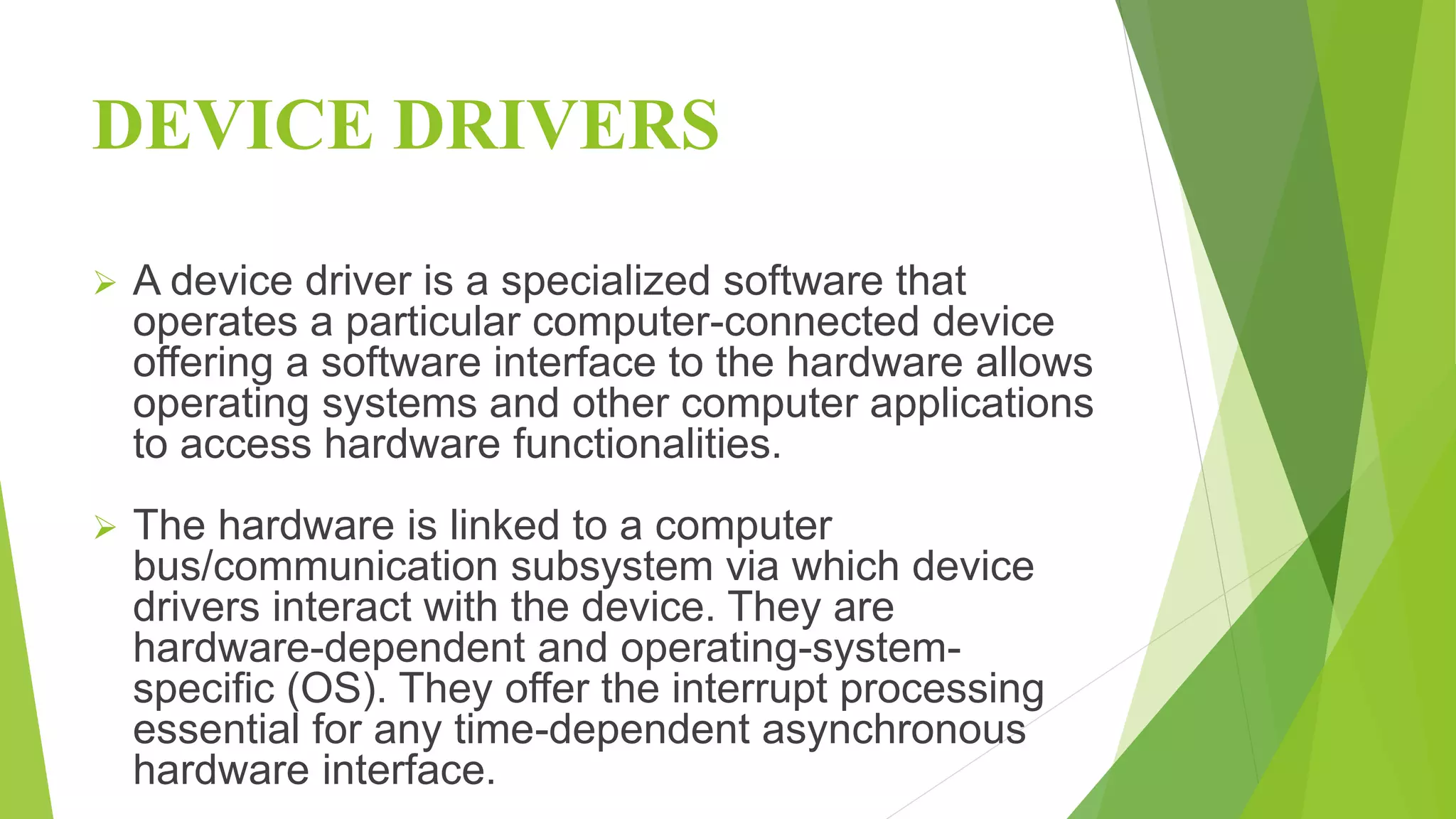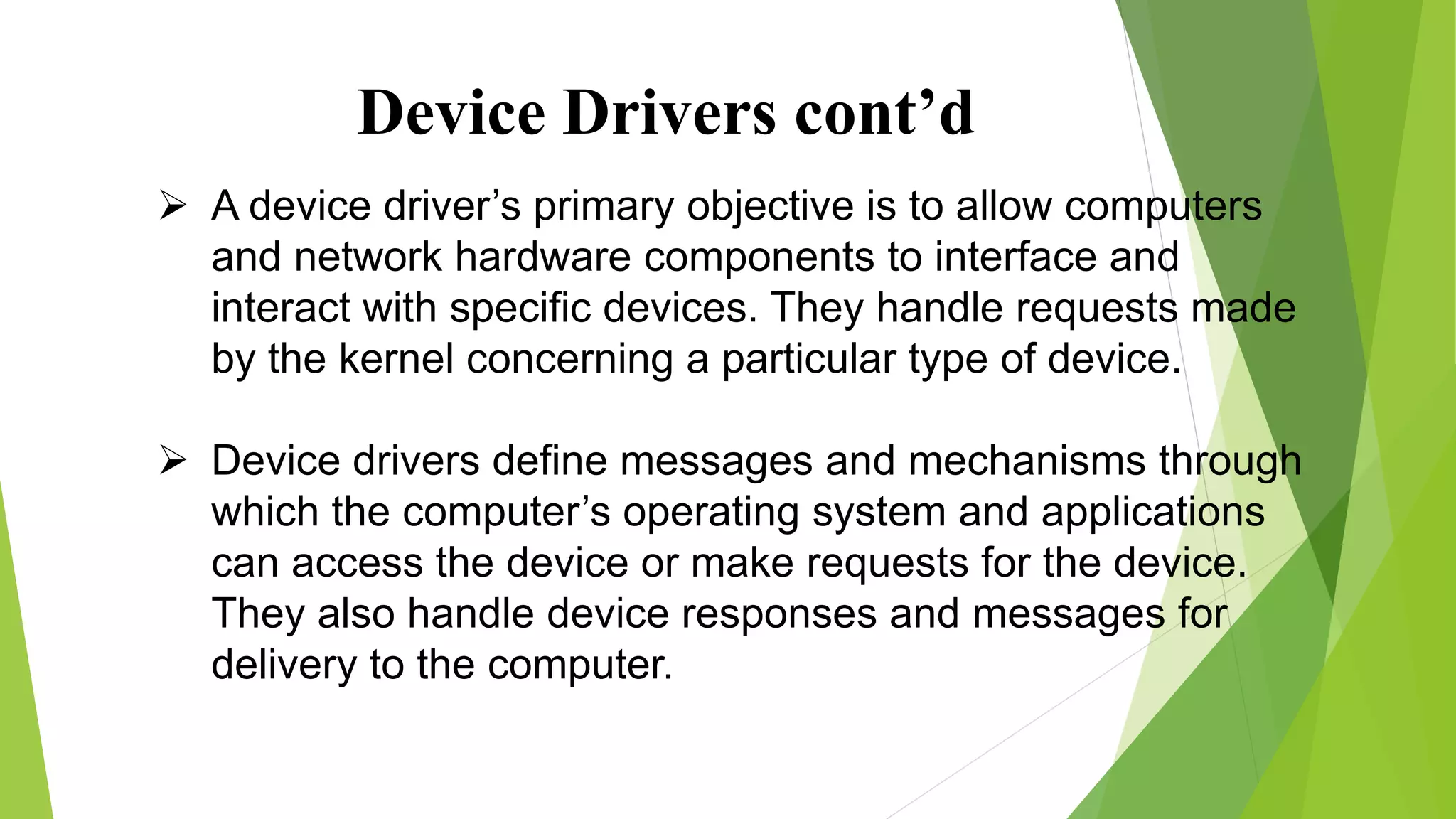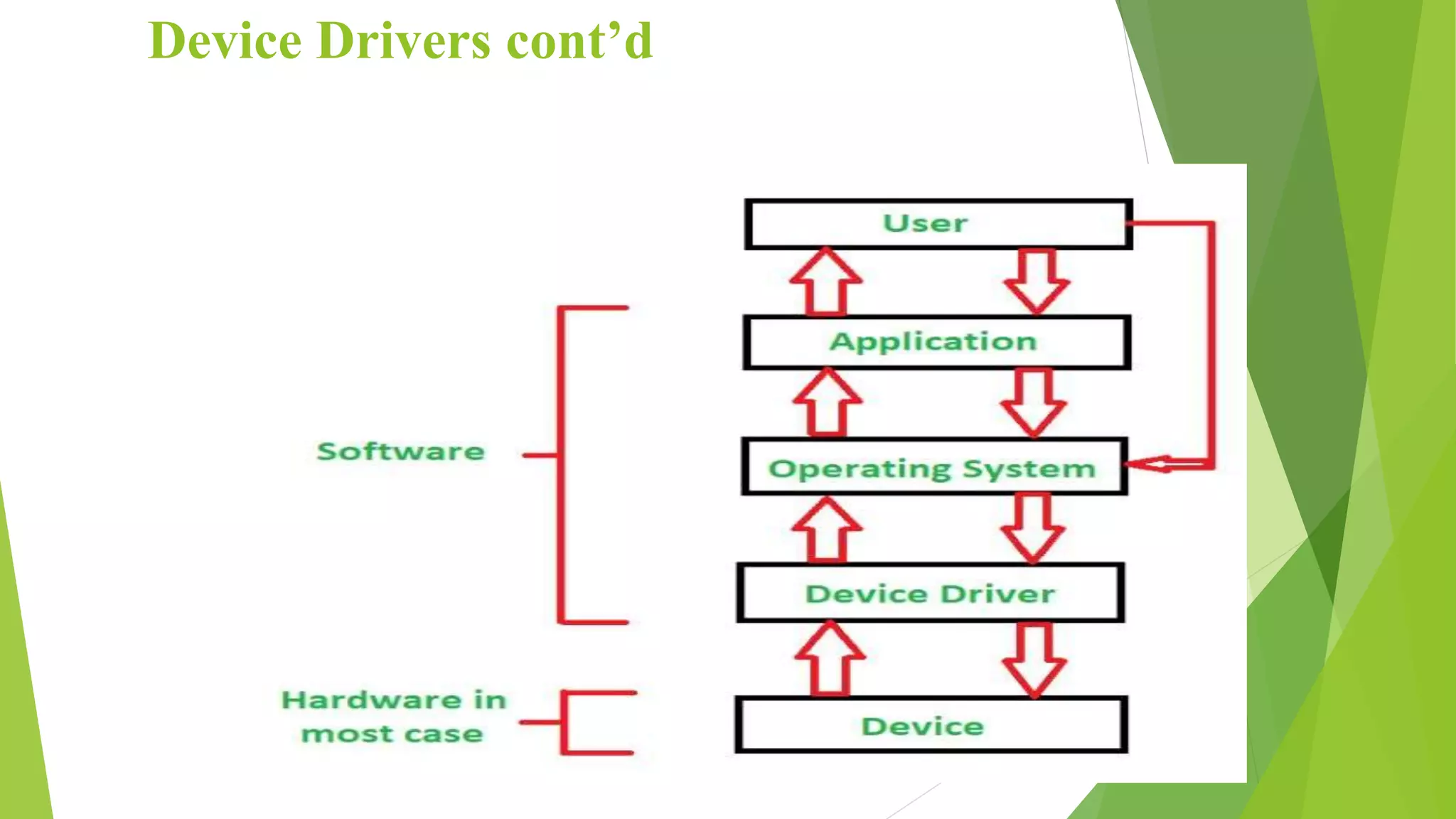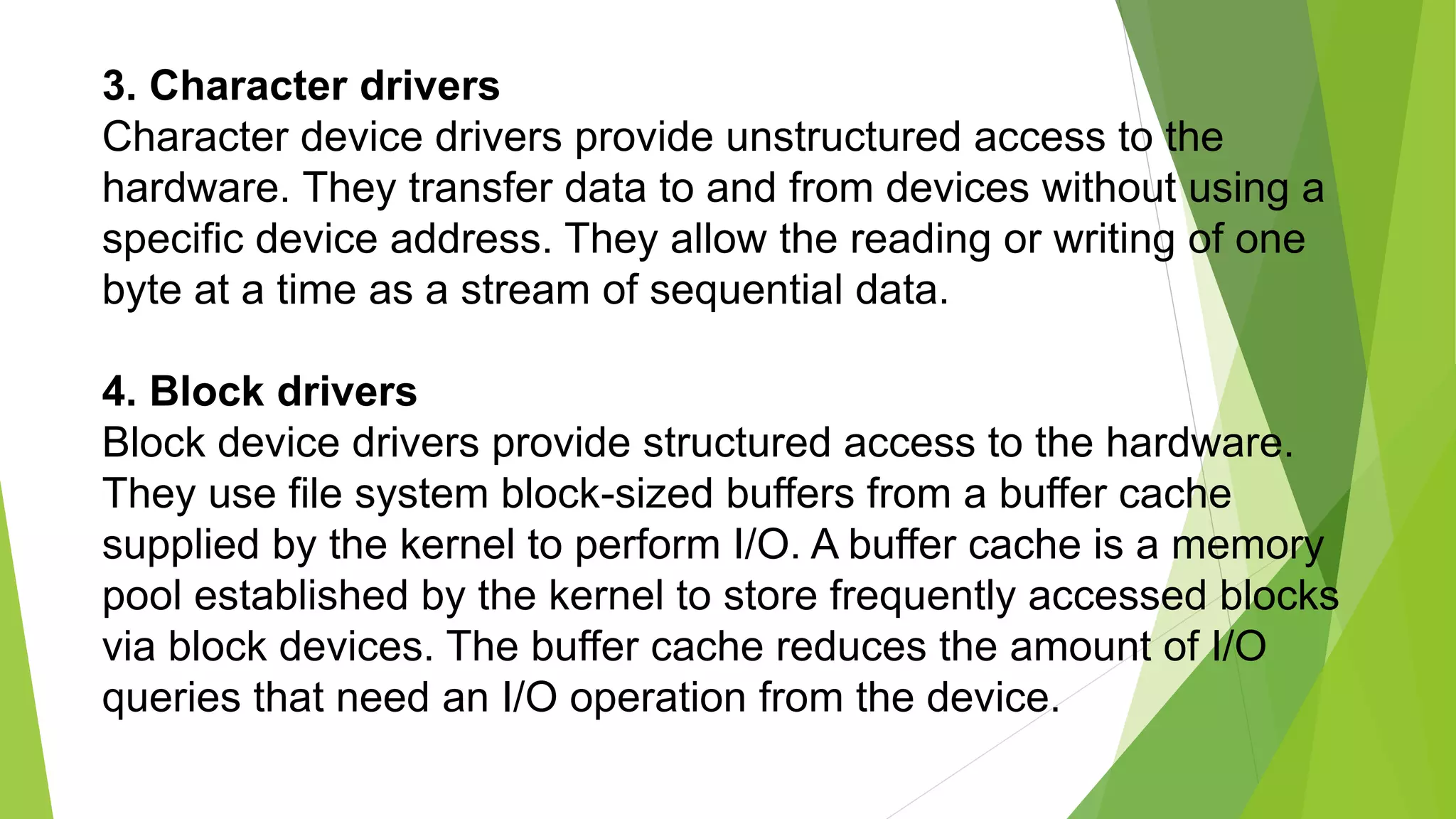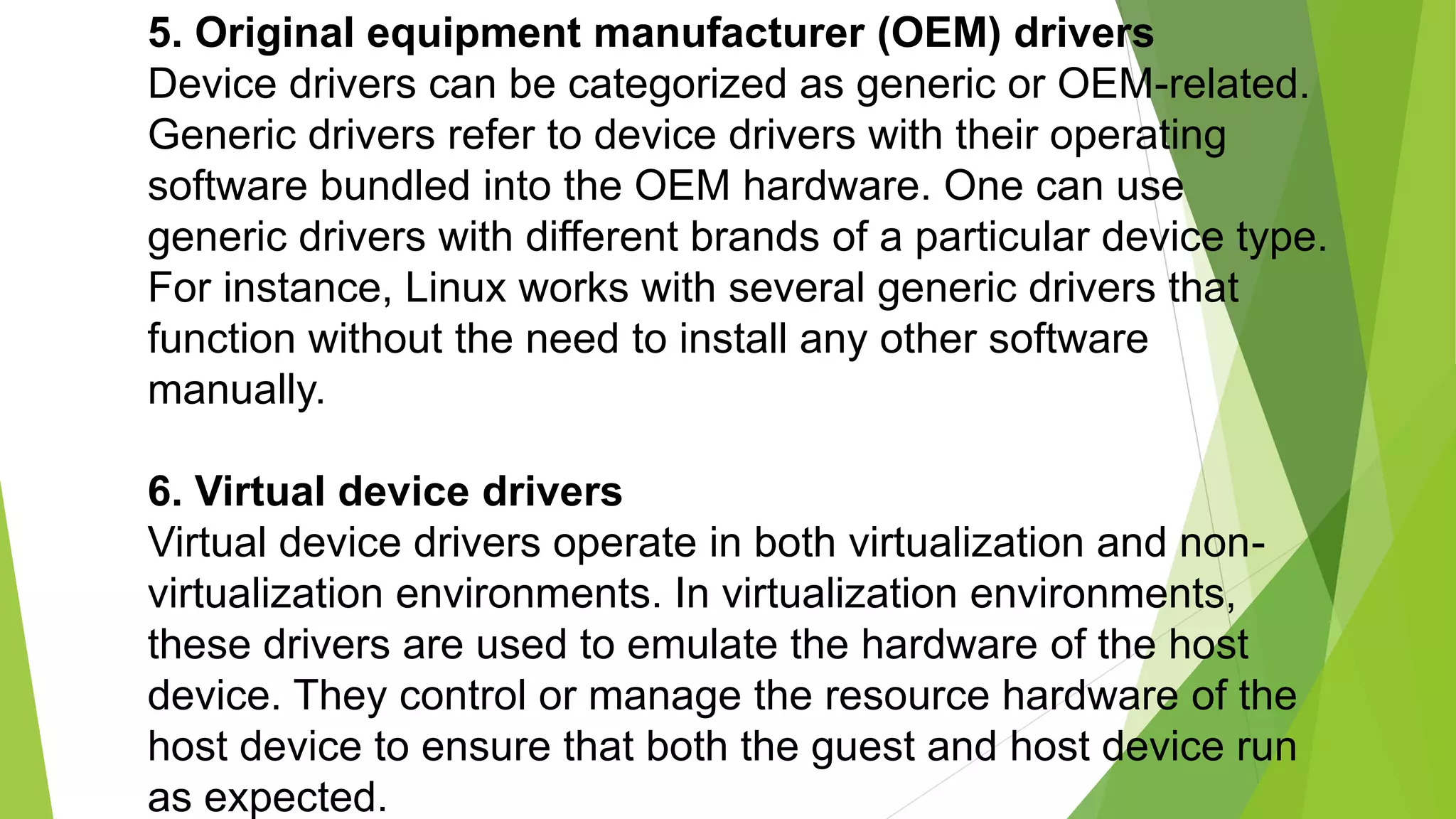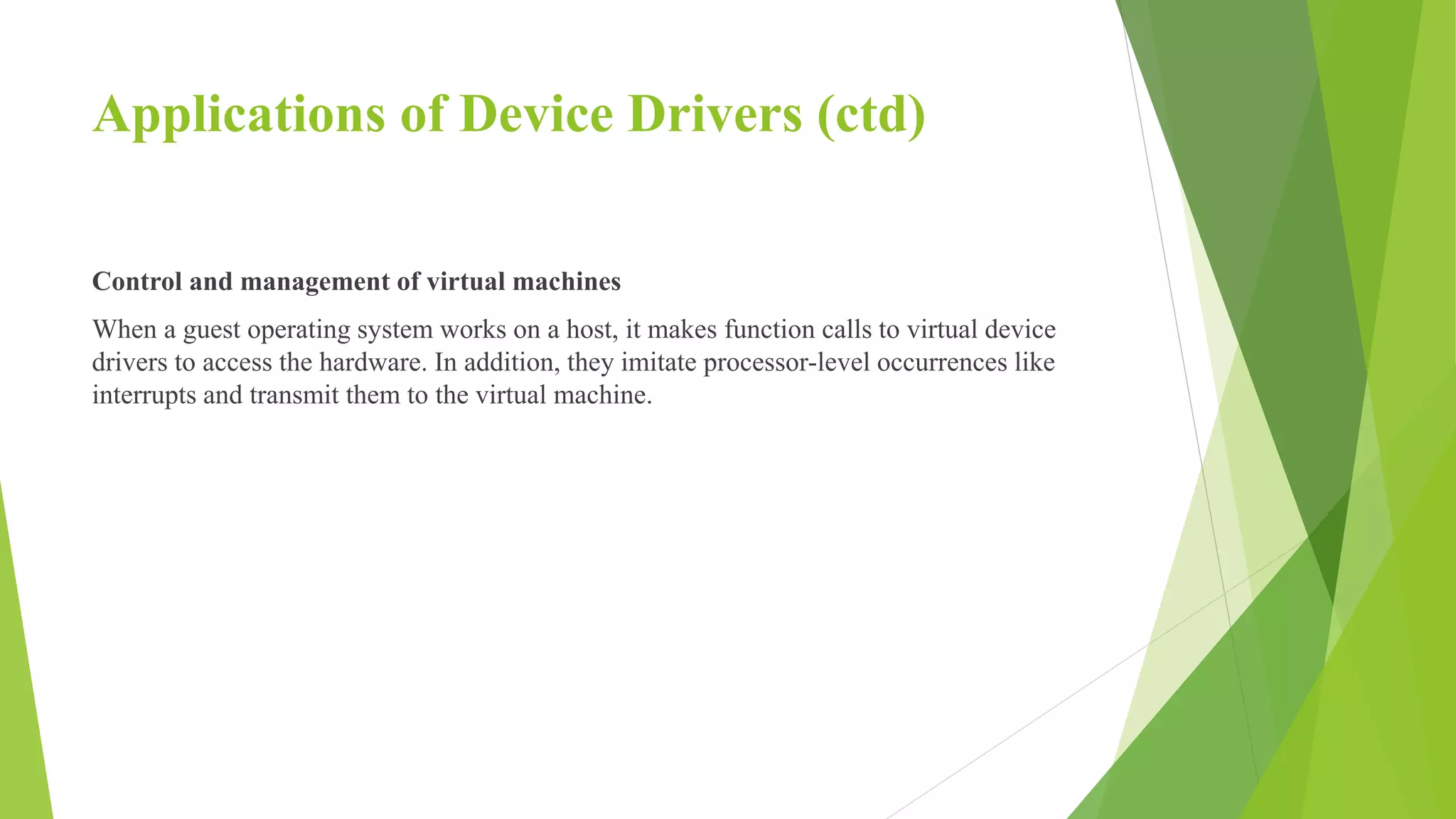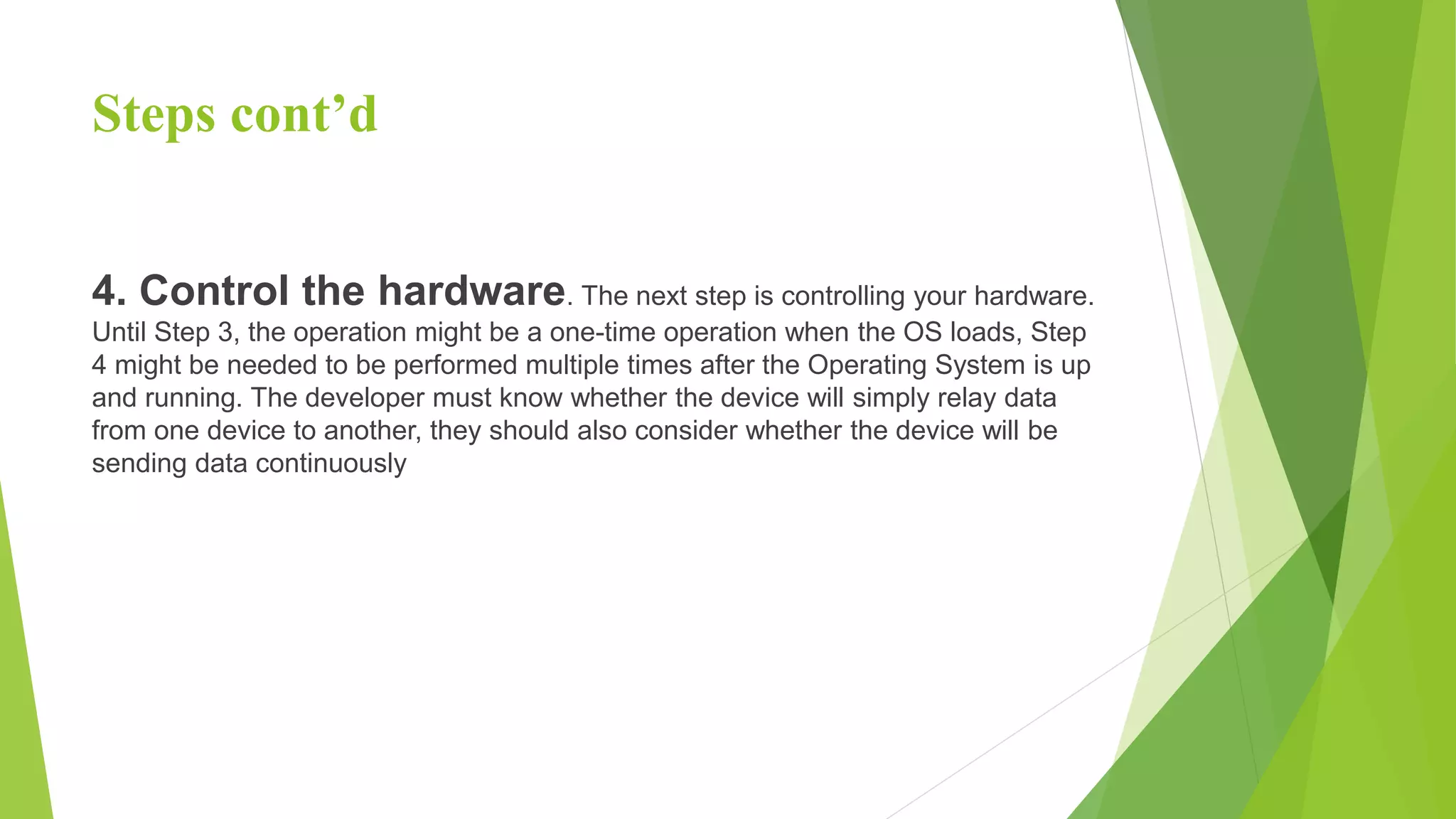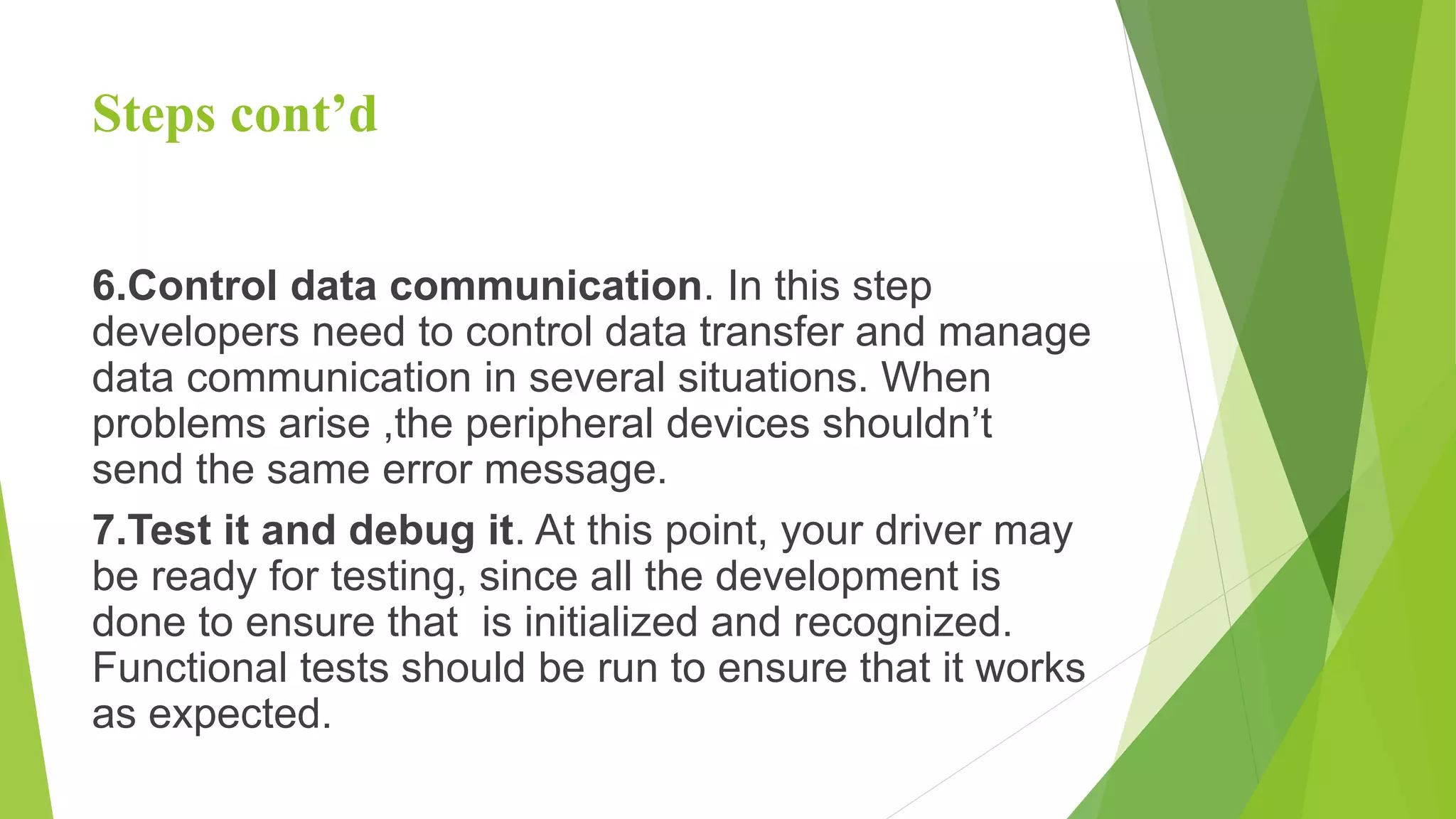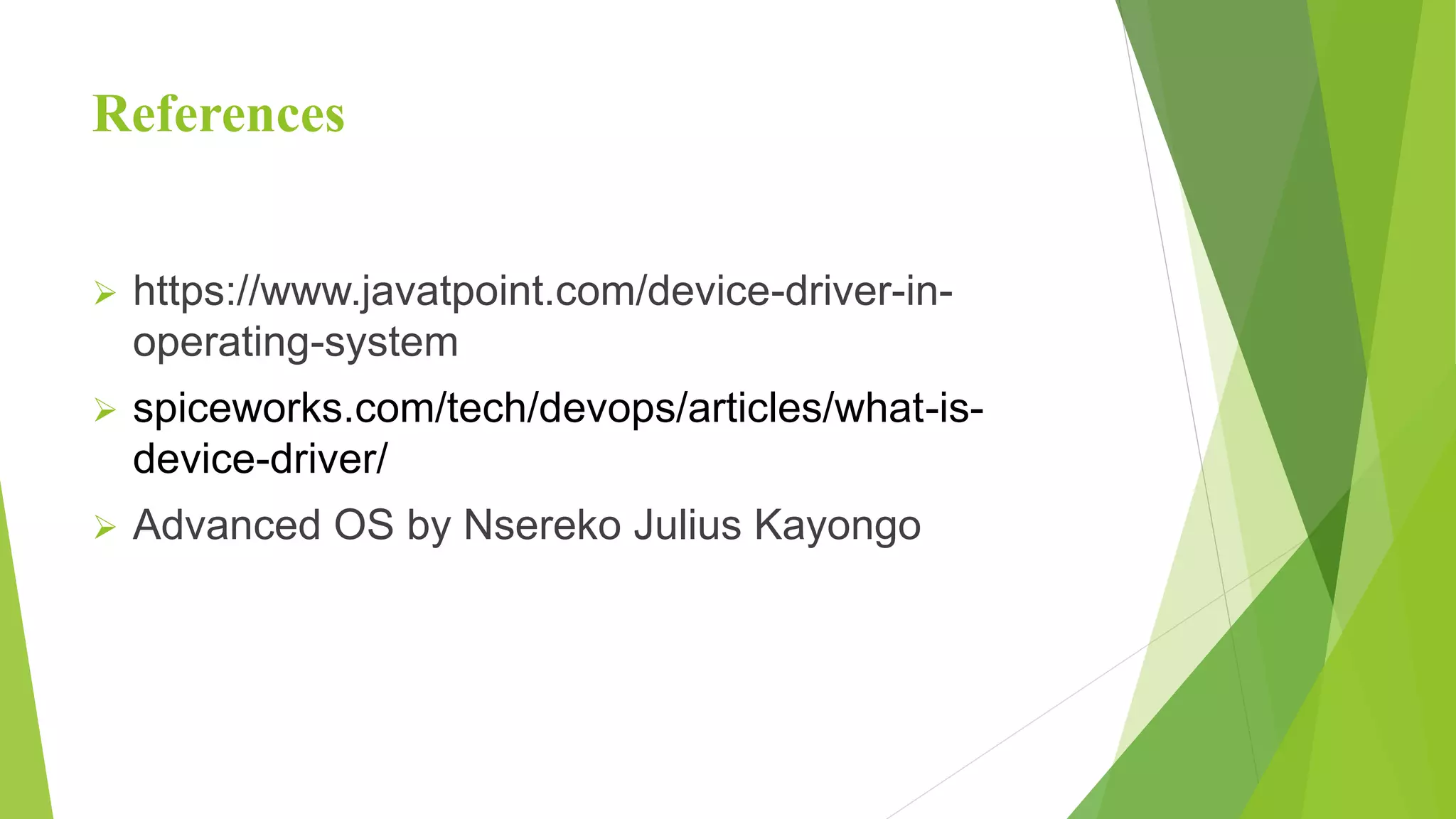This document discusses device drivers. It begins by defining a device driver as software that allows operating systems and applications to access hardware functionality. It then describes the main objectives of device drivers and how they handle requests from the operating system. Next, it covers different types of device drivers and provides examples. Applications of device drivers for storage, input/output, virtual machines, and peripherals are also outlined. Finally, the document lists the typical steps taken when developing new device drivers.

